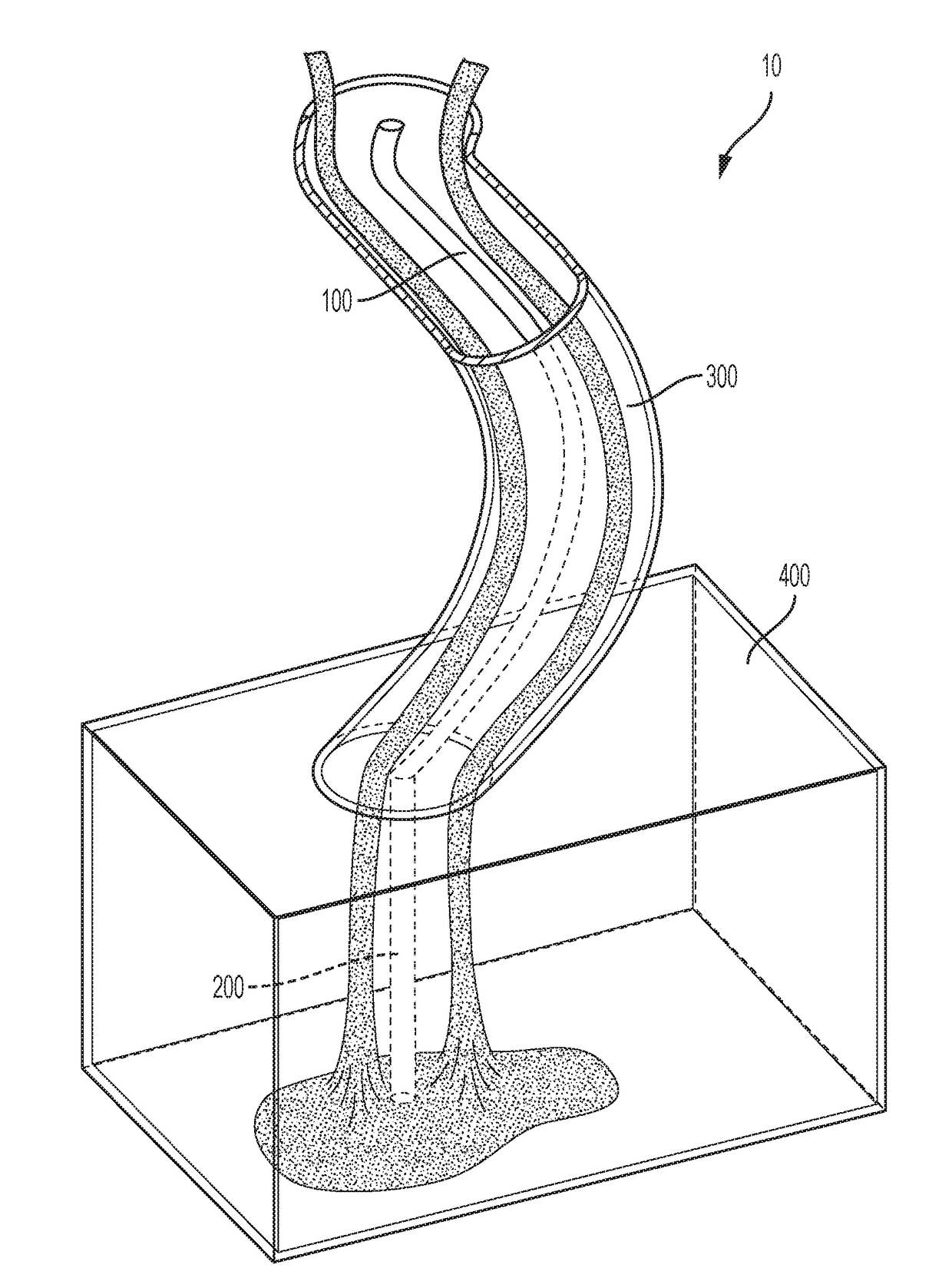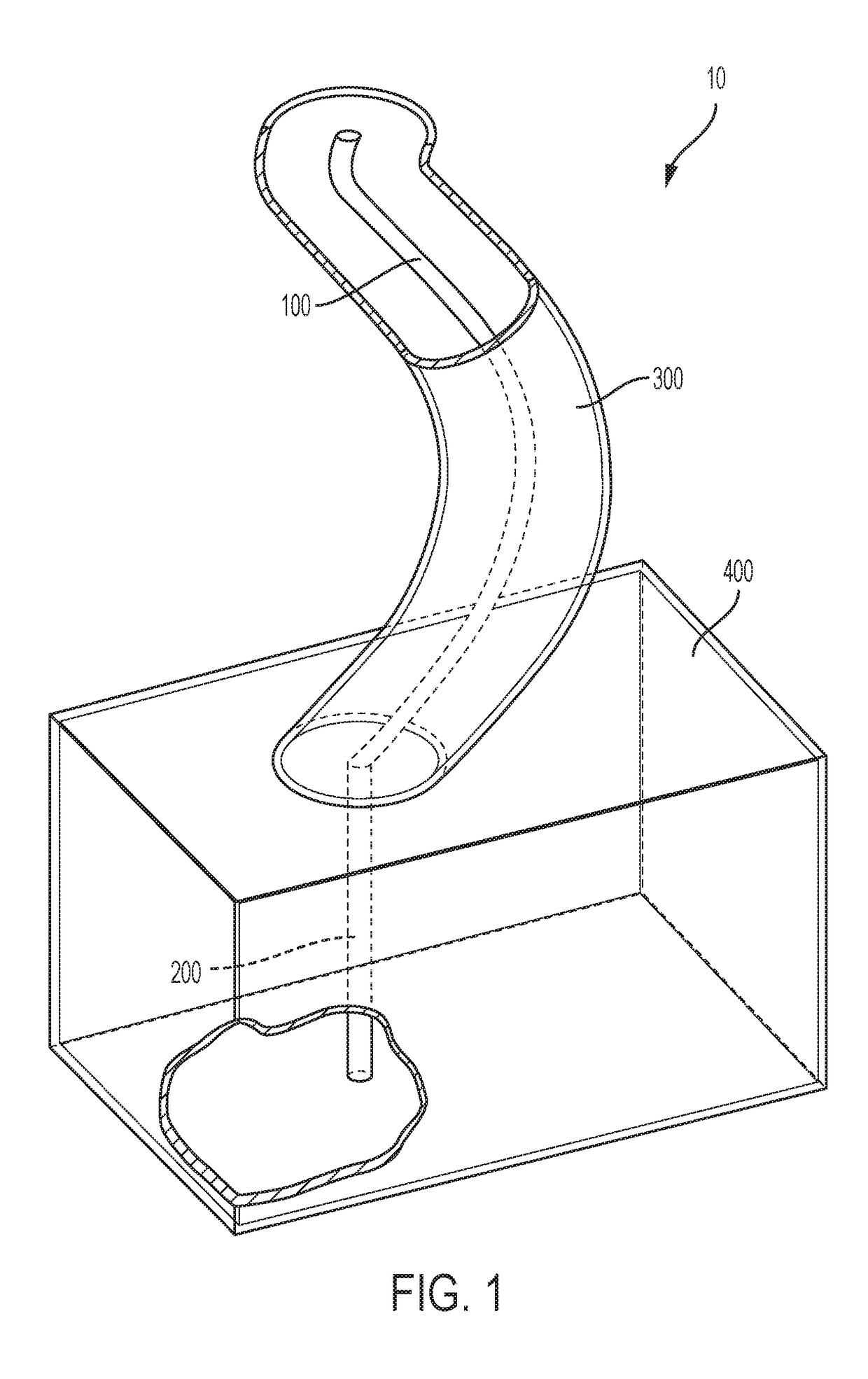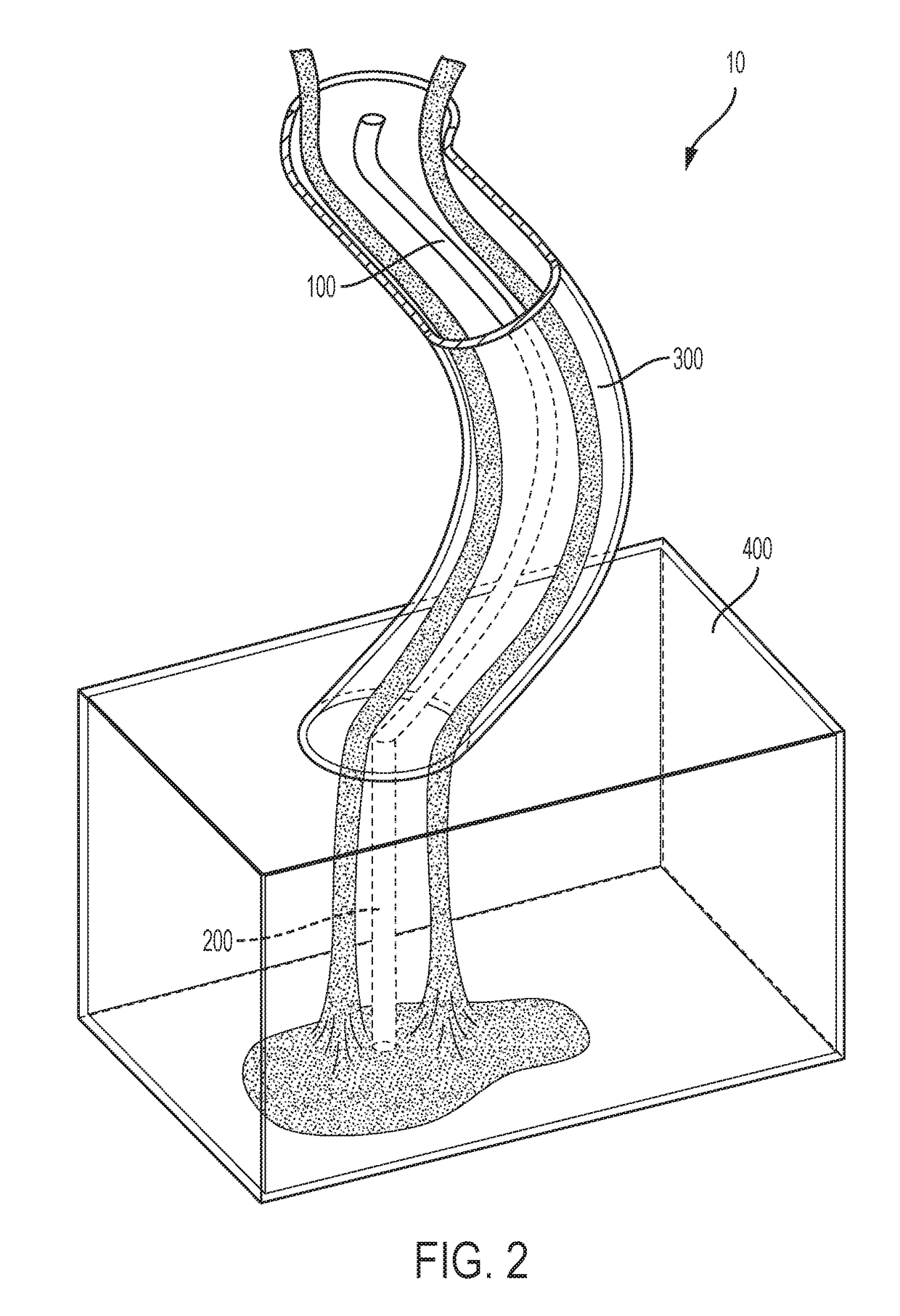Method for making hybrid ceramic/metal, ceramic/ceramic body by using 3D printing process
a technology of ceramic/ceramic body and 3d printing process, which is applied in the direction of blade accessories, machines/engines, domestic applications, etc., can solve the problems of complex geometries, too brittle ceramics for use in certain applications, and weak shearing and tension of ceramics, etc., and achieves the requirement of more complicated and intricate internal geometries
- Summary
- Abstract
- Description
- Claims
- Application Information
AI Technical Summary
Benefits of technology
Problems solved by technology
Method used
Image
Examples
example 1
General Procedure
[0081]First phase: To produce a ceramic structure in accordance to the method of the present invention, a photopolymer printer (e.g., 3D systems VisiJet) is used to fabric a plastic die having a structure forming an external surface and an internal hollow cavity. The internal hollow cavity will be fabricated by printing a strcture with an internal diameter of 0.016 inch and a depth of 0.5 inch to 1 inch long. The plastic die is produced using a tipcap pin having 0.045 inch diameter through an additive printing process. A slurry of ceramic materials, such as siloxane, silica, zircon, alumina, yttria is injected into the portion of the plastic die representing the external surface such that the slurry forms around the internal hollow cavity. Following one or more rounds of sintering at a temperature of about 1600° C., the green body is cured and the plastic die is removed or burned off leaving an internal hollow cavity having a diameter of approximately 0.016 inches a...
example 2
[0084]A plastic die is printed in accordance with the procedure set forth in Example 1. The plastic die will be designed to include both an external surface and an internal cavity having an outside diameter of 0.013 inch and a depth of 0.5 inch. As described before, a ceramic slurry is injected into the external portion of the plastic die. The ceramic portion now within the external portion of the die is heated to a temperature of 500° C. to cure the ceramic matrix as well as to burn off the plastic die. An alumina rod having a diameter of approximately 0.011 inch and a length of 0.5 inch that is coated in ceramic-based slurry is inserted into the internal cavity created by the internal hollow cavity. The combined ceramic and alumina rod is heated at a temperature of approximately 1600° C. to sinter the ceramic matrix and alumina rod, where the sintering creates a bond at the interface of the matrix and the rod. The resulting product is a reinforced ceramic body...
PUM
| Property | Measurement | Unit |
|---|---|---|
| Temperature | aaaaa | aaaaa |
| Temperature | aaaaa | aaaaa |
| Depth | aaaaa | aaaaa |
Abstract
Description
Claims
Application Information
 Login to View More
Login to View More - R&D
- Intellectual Property
- Life Sciences
- Materials
- Tech Scout
- Unparalleled Data Quality
- Higher Quality Content
- 60% Fewer Hallucinations
Browse by: Latest US Patents, China's latest patents, Technical Efficacy Thesaurus, Application Domain, Technology Topic, Popular Technical Reports.
© 2025 PatSnap. All rights reserved.Legal|Privacy policy|Modern Slavery Act Transparency Statement|Sitemap|About US| Contact US: help@patsnap.com



